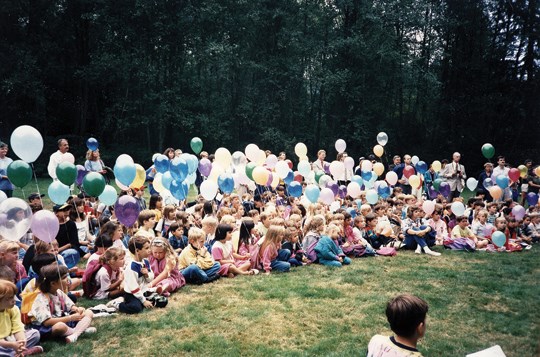Many people in Deep Cove think of Cove Cliff school as having always been there.
But some old-timers can remember when the site was known as Skunk Hollow – a flat patch of land that had once been used as a baseball diamond. The creek below it was unbridged, and to the east, where the soccer field is now, there was an almost impassable bog.
No one thought much about Skunk Hollow, but they thought a lot about Burrard View school, Deep Cove’s elementary. It had been built in a hurry just after the Second World War, and 30 years later it had aged badly. It was also on the wrong side of Deep Cove Road, so most of its pupils had to cross the road amid busy traffic.
Planning for Cove Cliff was already underway, but it soon ran into political trouble. Some local residents objected that the school would be noisy and would require higher property taxes.
Other residents, including parents, argued that Cove Cliff would be more centrally located and much safer for kids walking to and from school.
This presented a problem for the North Vancouver school board. In those days boards controlled local residential and industrial property taxes, and taxes were no more popular then than they are now.
North Vancouver was already spending a lot for the new Seycove Secondary, including more on programs that couldn’t be justified by Seycove’s low enrolment. But without such programs Seycove students would have switched to Windsor.
So spending for a new elementary school was going to be hard for the board to justify, even though trustees knew it was needed.
Pro- and anti-Cove Cliff groups soon formed, lobbying the board and taking part in town hall debates. Opponents warned that like Seycove, Cove Cliff wouldn’t have enough students to justify its costs (they also worried about the fish in the creek).
The battle dragged on for months and then years. It helped me get elected as a pro-Cove Cliff trustee in 1980, and then got me defeated two years later. The recession of the early 1980s made things worse, with people clamouring for tax relief.
So not until 1990 did Cove Cliff school open; Burrard View was torn down and the site turned into a housing co-op. Far from being under-populated, the new school soon had portable classrooms on its playground (and so, of course, did Seycove). The quarrels ended, and Cove Cliff school has served its community well for more than a quarter-century.
Crawford Kilian taught at Capilano College from its opening in 1968 to his retirement in 2008.
Editor’s note: Wendy Bullen Stephenson will give a presentation on Burrard View school’s early years on Feb. 8 at 11 a.m. in the meeting room at Deep Cove Cultural Centre. Everyone is welcome to attend. ■



